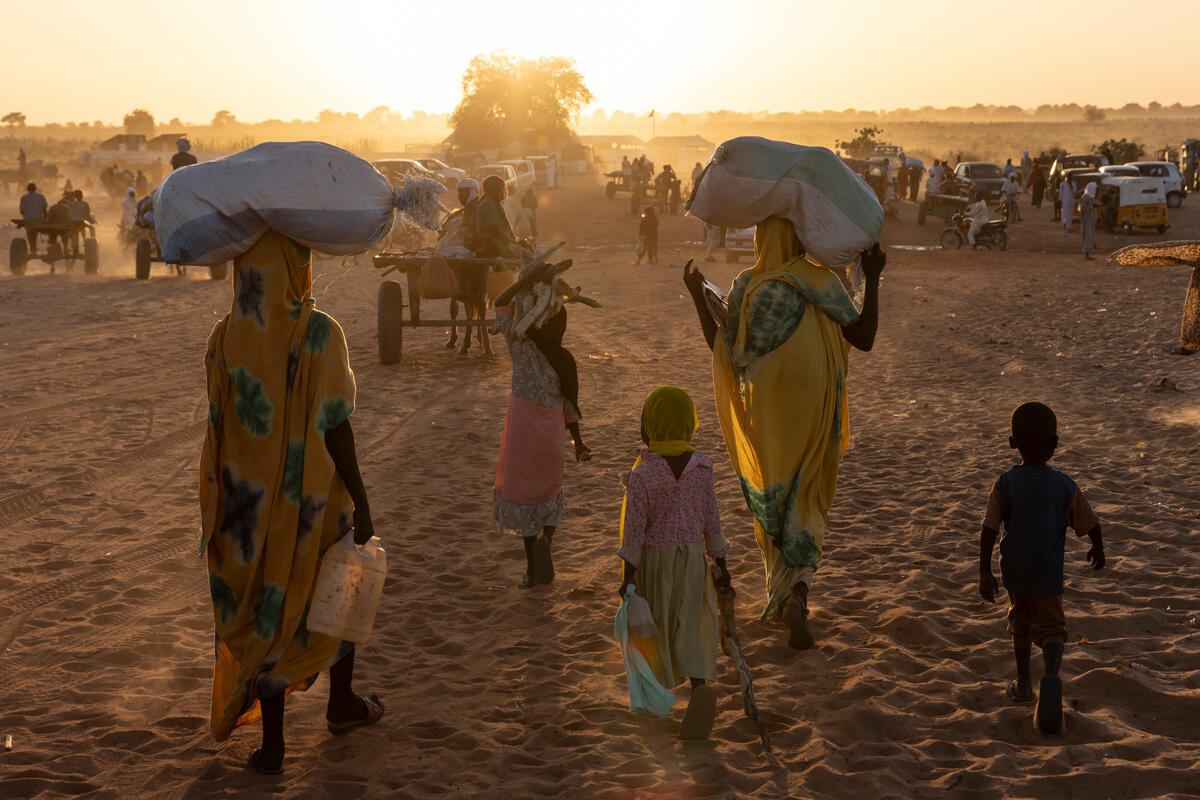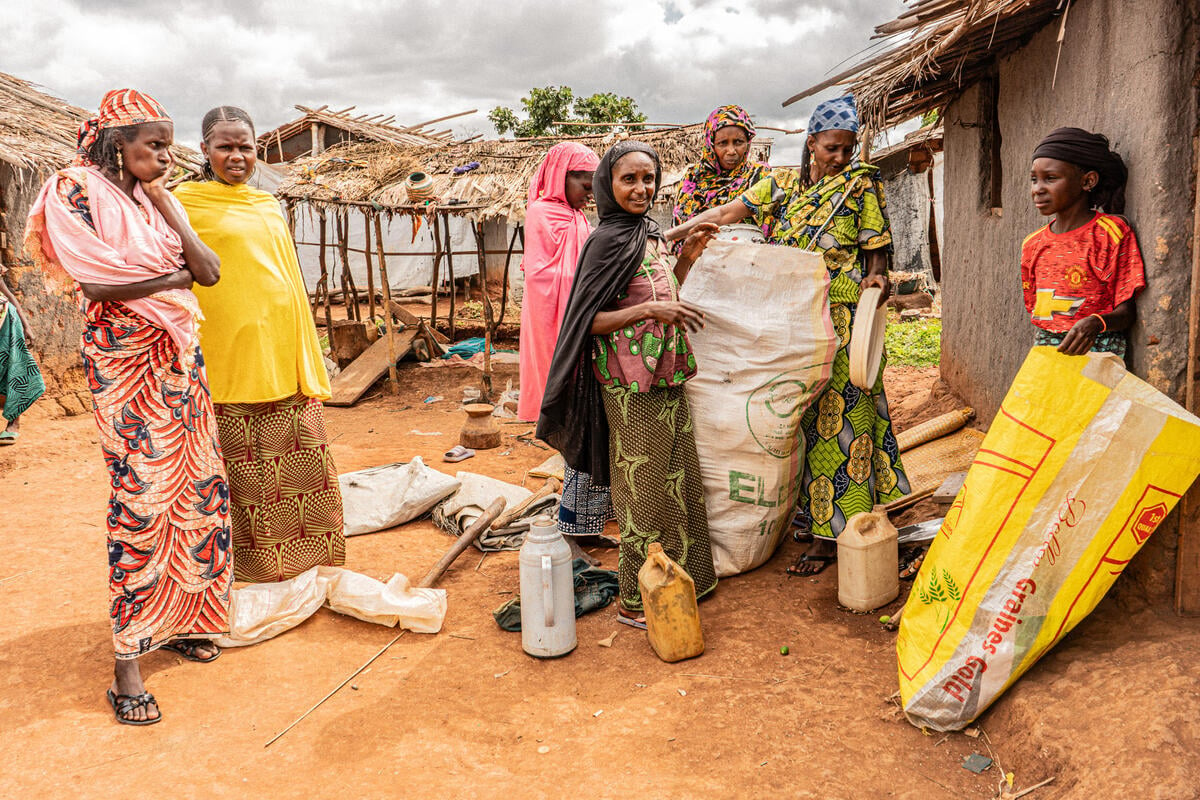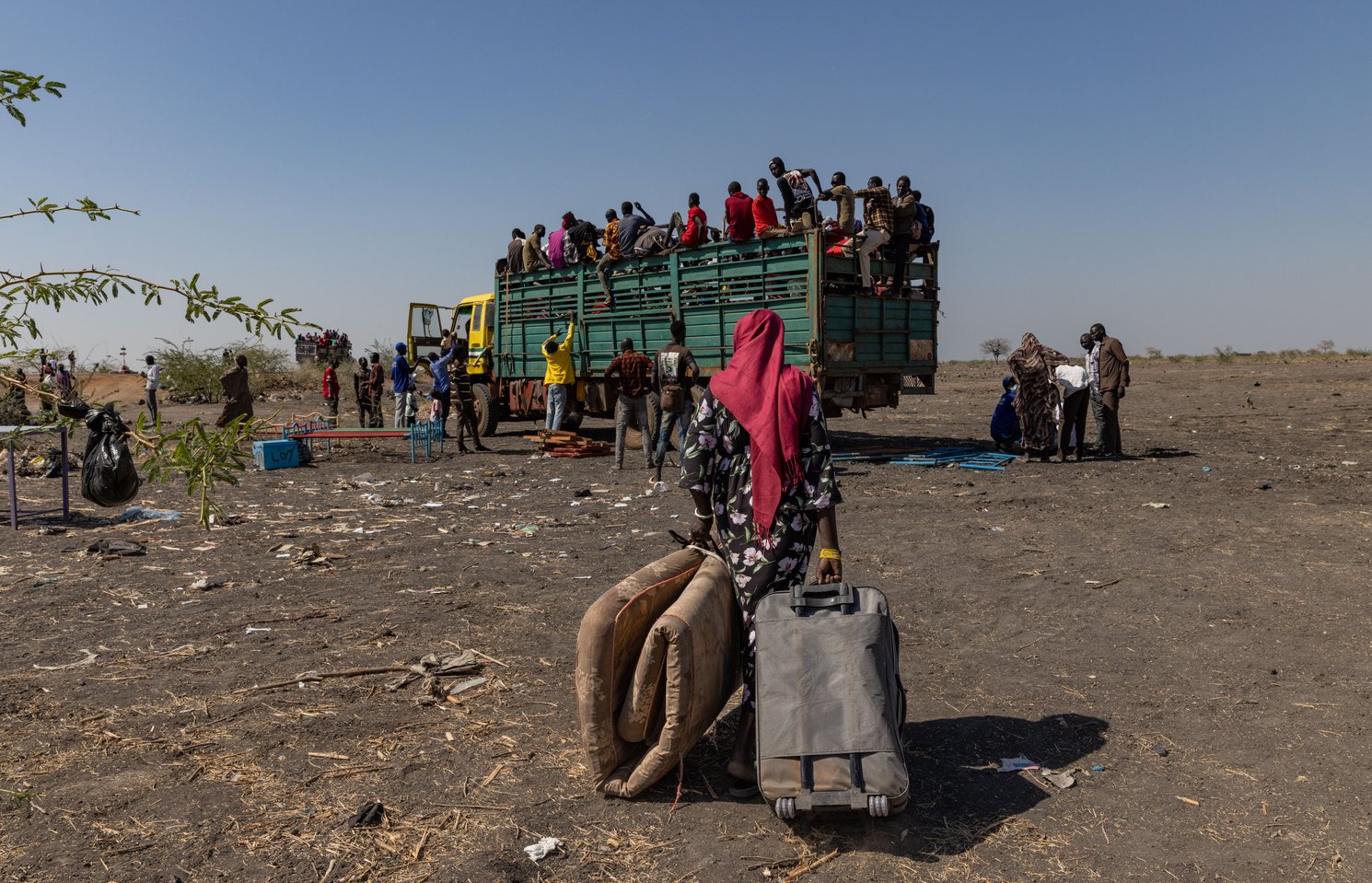UNHCR tackles dire conditions for thousands of displaced in Central African Republic church
UNHCR tackles dire conditions for thousands of displaced in Central African Republic church

BANGUI, Central African Republic, October 25 (UNHCR) - Sitting on an old stool in the shade of a tree, Mary calls out to UNHCR staff talking to her neighbours and complains about the living conditions in her new home.
"I want to be with my family in the new space you arranged," said the 40-year-old, who has been living in two tents with her husband and eight young children since fleeing her village last August and arriving in the town of Bossangoa, which is located in Central African Republic some 400 kilometres north-west of the capital, Bangui.
"There is no privacy here, and when our neighbour cooks we get all their smoke in our tent," added Mary in the grounds of Bossangoa's Roman Catholic church, which has acted like a magnet for some 37,000 people forced to flee fighting in the past two months between self-defence groups and members of a former rebel coalition in the north and west of the country.
There is a reek of humanity in the settlement, where sanitation and hygiene are big concerns. The displaced are living in dire conditions, but UNHCR and its partners are rushing to try and improve the situation there. The refugee agency has this week sent an expert of emergency shelter and a site planning officer to Bossangoa.
They are urgently needed. Although the UN Children's Fund (UNICEF) has supplied plastic sheeting, people are crammed together in a tiny area, which poses a hazard to health and to the safety of people, especially women. Some people have brought along livestock, including goats and pigs. The World Food Programme distributed food earlier this month to people at the church, a hospital and school.
"These 37,000 displaced people are camping in an area of only five hectares," said Maurice Azonnankpo, a UNHCR protection officer in Bangui, while adding that this was 1.2 square metres per person against the recommended 4.5 square metres.
And they are likely to stay there for a while, as the situation remains tense and unstable in the area. In coordination with the local authorities, UNHCR has funded the construction of an extension to the church so that more people can stay there. The internally displaced say they feel safer on the grounds of the church and less liable to attack.
Local authorities have also asked UNHCR to help find or provide shelter in the town's Sous district as those will help to decongest the hospital (2,700 people) and the school (728) that people are using for shelter.
Since the latest political and displacement crisis in the Central African Republic began last December, the landlocked and poverty stricken country has been caught in a vicious cycle of violence that has seen some 400 people killed and 800 houses burned.
This violence has uprooted some 400,000 people within the country, and almost 70,000 CAR refugees have been registered in neighbouring countries - including more than 43,000 in the Democratic Republic of the Congo, almost 12,100 in Chad, some 9,200 in the Republic of Congo and above 4,280 in Cameroon. UNHCR teams in these countries are providing protection and assistance.
By Djerassem Mbaiorem in Bangui, Central African Republic








